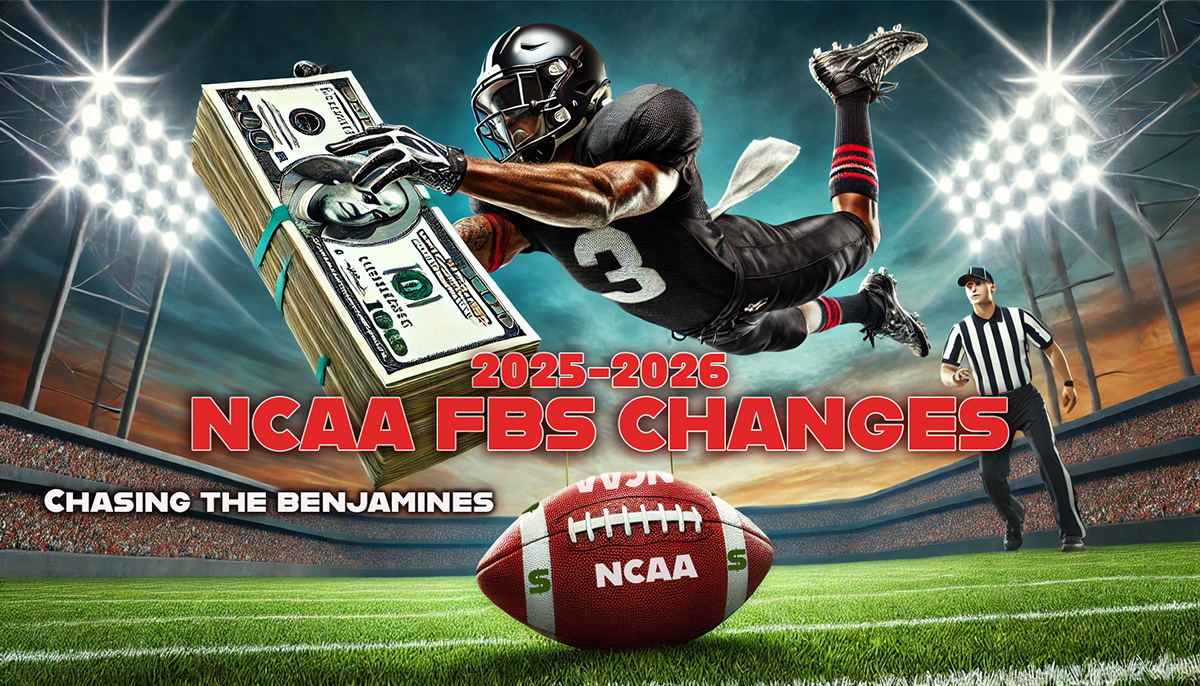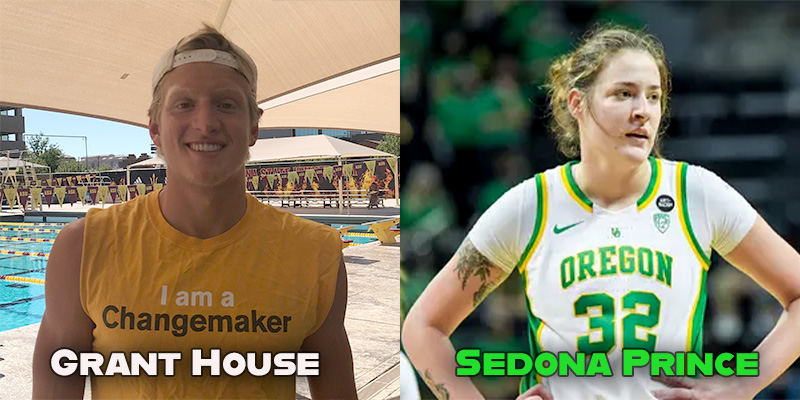Major NCAA Football Changes in 2025-’26: Revenue Sharing & More Scholarships

The NCAA landscape rapidly shifts as college football revenues from media and merchandising soar. Schools are scrambling to join more lucrative conferences, seeking greater exposure and financial rewards. Meanwhile, athletes are advocating for a larger share of the sport’s growing riches, fueled by the rise of name, image, and likeness (NIL) deals. With the 2025-2026 season on the horizon, these developments are set to redefine college football, shaping everything from player compensation to conference alignments. This article will dive into the transformative changes and what they mean for fans, athletes, and programs.
More NCAA Football Scholarships Means More Opportunity
A major shift for the 2025 NCAA football season is the expansion of scholarship limits for the Football Bowl Series (FBS) and Football Championship Series (FCS) schools. FBS programs can now offer up to 105 scholarships, up from 85, while FCS schools opting into the House v. NCAA settlement (see below) will get an increase from 63 to 105—the same amount of scholarships as FBS schools. However, FCS schools have a maximum roster limit of 105 players, while the FBS colleges have no cap on their rosters. These changes create significantly more opportunities for high school athletes.
Although NCAA rules do not require a school to utilize all its available scholarships, elite programs will likely take full advantage of them to enhance their rosters and prevent talent from going to rival teams—especially considering the financial implications of successful football programs.
What To Know About the House v. NCAA Settlement Case That Includes a $2.75 Billion Award for Back Pay
The increase in football scholarships offered by NCAA Division I schools was not due to the NCAA’s goodwill—it is part of a resolution to three separate lawsuits against the NCAA that gained class-action status: 1) Grant House and Sedona Prince v. NCAA, 2) Chuba Hubbard and Keira McCarrell v. NCAA, and 3) Dewayne Carter, NYA Harrison and Sedona Prince v. NCAA. For simplicity, we will collectively refer to these three lawsuits as the House v. NCAA settlement since they were resolved together, and most issues centered around the House case.
Note: For information on the details and specifics of the three lawsuits against the NCAA, please refer to the links in the Related Links section at the end of this article.

The House v. NCAA case was brought in 2020 by Grant House, an Arizona State swimmer, and Sedona Prince, a basketball player who played at Texas Christian and Oregon. Their case was granted class-action status in 2023. The subsequent settlement also resolves the issues contested in the other lawsuits that Hubbard and Carter brought against the NCAA. It provides financial relief to all NCAA Division I athletes—since 2016—who participated in revenue-generating sports within the following Power Five Conferences: Atlantic Coast Conference (ACC), Big Ten Conference, Big 12 Conference, Pacific-12 Conference (Pac-12), and Southeastern Conference (SEC). As a result of this landmark case, the NCAA is 1) compelled to increase scholarship allotments across all the Power Five Conference schools’ sports programs and 2) forced to share past and future revenue with the athletes. Click on this link to read about the specific details of the settlement on the official NCAA site.
NCAA Revenue Sharing: How Much Money Will Athletes Get?
On October 7, 2024, Federal Judge Claudia Wilken granted preliminary approval for the House v. NCAA settlement. The final approval hearing is set for April 7, 2025. The following issues are under consideration for final approval:
- Compensation for past and future student-athletes.
- A cap on how much schools can spend on compensating student-athletes for the use of their name, image, and likeness (NIL)
- The ability for schools to make direct payments to student-athletes
- An annual pool of revenue for schools to distribute among athletes, capped at about $22 million per institution
- Back pay for athletes whose careers date back to 2016, split evenly across 10 years
- The ability for schools to provide partial athletic scholarships for sports like football, basketball, and volleyball
- The adoption of football’s redshirt rules, which allow athletes to use a fifth year of eligibility if they play less than 30% of the games in a season
What Will the Future Revenue-sharing Amounts Be for NCAA Athletes?
NCAA Division I Power Five Conference athletes who compete in revenue-generating sports are expected to receive up to 22% of their conference’s annual revenue. Current projections suggest that this could amount to approximately $22 million per conference, distributed among the athletes annually. The specific amount each athlete receives will depend on various factors, including their playing time, the sport they participate in, and the revenue their school generates. They will iron out the specifics of each item in the approved settlement.
How Much Back Pay Will NCAA Division I Athletes Get?
The total estimated amount of back pay for athletes participating in NCAA Division I revenue-generating sports at Power Five Conference schools from June 15, 2016, to September 15, 2024, is approximately $2.75 billion, to be distributed over a ten-year period. For example, Power Five Conference athletes, especially those in football or men’s basketball, are projected to receive around $135,000 each in back pay damages. The exact amount each athlete gets will depend on factors such as their playing time, the specific sport, and the revenue generated by their school. The details of each payment will be outlined in the approved settlement agreement.
What Are the Downside Costs of the House v. NCAA Settlement?
The downside—and they’re significant—of the House v. NCAA settlement lies in its potentially devastating impact on non-revenue-generating sports. Many programs, particularly Olympic-level sports like gymnastics, swimming, wrestling, and track and field, face drastic cuts or outright elimination as colleges scramble to offset the financial burden of increased scholarships and revenue sharing for athletes in major sports like football and basketball. These smaller programs, which often operate on limited budgets, could become collateral damage in the push for equity in high-revenue sports.
The losses associated with the House v. NCAA extend beyond college campuses. It could diminish the talent pipeline for U.S. Olympic teams, reducing opportunities for athletes who rely on collegiate programs for training and exposure. Moreover, eliminating these programs disproportionately impacts student-athletes who may never play professionally but gain invaluable education, leadership development, and lifelong skills through college sports. For many, these programs serve as their only pathway to higher education.
Some critics argue that the settlement creates an uneven playing field, benefiting star athletes in lucrative sports at the expense of less visible but equally valuable programs. Colleges may face a difficult decision between complying with regulations and maintaining the wide range of opportunities traditionally defining NCAA athletics. While the settlement represents progress for revenue sharing and athletes’ rights, its broader implications suggest that there may be significant consequences for the diversity and inclusivity of collegiate sports overall.
These changes will undoubtedly have long-lasting repercussions on college sports, as they will highly depend on future economic conditions and the continued popularity and revenue-generating ability of NCAA football and basketball. How long does the great ride last? A drop in popularity or a severe economic downturn could spell disaster with so much of this settlement depending on media revenue streams.
Other NCAA FBS Changes for 2025-2026
More Schools On the Move Seeking More Dollar Bills
NCAA FCS schools Delaware and Missouri State will move up to the FBS and join Conference USA in 2025, becoming full FBS members in 2026.
Beginning in the 2026 season, the Pac-12 will include five new teams joining Oregon State and Washington State, its two remaining members, after last year’s devastating loss of ten member schools to other conferences. The new Pac 12 members will include Boise State, Colorado State, Fresno State, San Diego State, and Utah State, making it a seven-team conference. You can expect to hear about at least one more team joining the conference soon, as NCAA rules stipulate that there must be at least eight teams in a conference for its champion to qualify for an automatic bid to the 12-team College Football Playoff.
Conference USA loses UTEP to the Mountain West in 2026.
Northern Illinois will leave the MAC and join the Mountain West in 2026.
Yeah, the changes keep on coming. Stay tuned.
Related Links
House v. NCAA Settlement Update
Grant House and Sedona Prince v. NCAA
Dewayne Carter, Nya Harrison, and Sedona Prince v. NCAA
